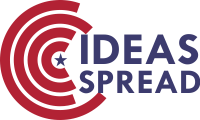Research on Folk Sports to Improve Residents' Social Adaptation Ability in Ease of Relocation
Abstract
While improving the living conditions of residents, the relocation project also brings new challenges of cultural adaptation and social integration. This study takes folk sports as an entry point to explore the unique value and practical path in promoting the social adaptability of relocated residents. It is found that folk sports activities effectively alleviate the challenges of cultural rupture and reconstruction of social relations during the relocation process through multiple mechanisms such as cultural identity reconstruction, social capital accumulation and psychological adjustment. The study proposes four practical paths: hierarchical organization, cultural innovation, resource protection and activity promotion, which expand the social function of folk sports and provide practical references for the design of the cultural dimension of the resettlement policy.
References
[2] Liu, B. (2022). Exploring the influence of regional culture on the development of folk sports. Secondary School Geography Teaching Reference, (08), 101.
[3] Li, H., & Song, G. (2024). Social base optimization and grassroots governance effectiveness of rural revitalization in relocated communities. Qinghai Ethnic Studies, 35(04), 72–81. https://doi.org/10.15899/j.cnki.1005-5681.2024.04.009
[4] Liu, T., He, Q., Xia, J., et al. (2023). Historical examination and practical path of folk sports helping rural governance develop in high quality. Sports Science, 43(12), 54–61. https://doi.org/10.16469/j.css.202312006
[5] Zhou, H., & Zhou, Q. (2022). Influence of physical exercise on residents' social adaptability and estimation of net effect: An analysis based on propensity value matching method. Journal of Henan Normal University (Natural Science Edition), 50(06), 145–152. https://doi.org/10.16366/j.cnki.1000-2367.2022.06.019

This work is licensed under a Creative Commons Attribution 4.0 International License.
Copyright for this article is retained by the author(s), with first publication rights granted to the journal.
This is an open-access article distributed under the terms and conditions of the Creative Commons Attribution license (http://creativecommons.org/licenses/by/4.0/).









1.png)














